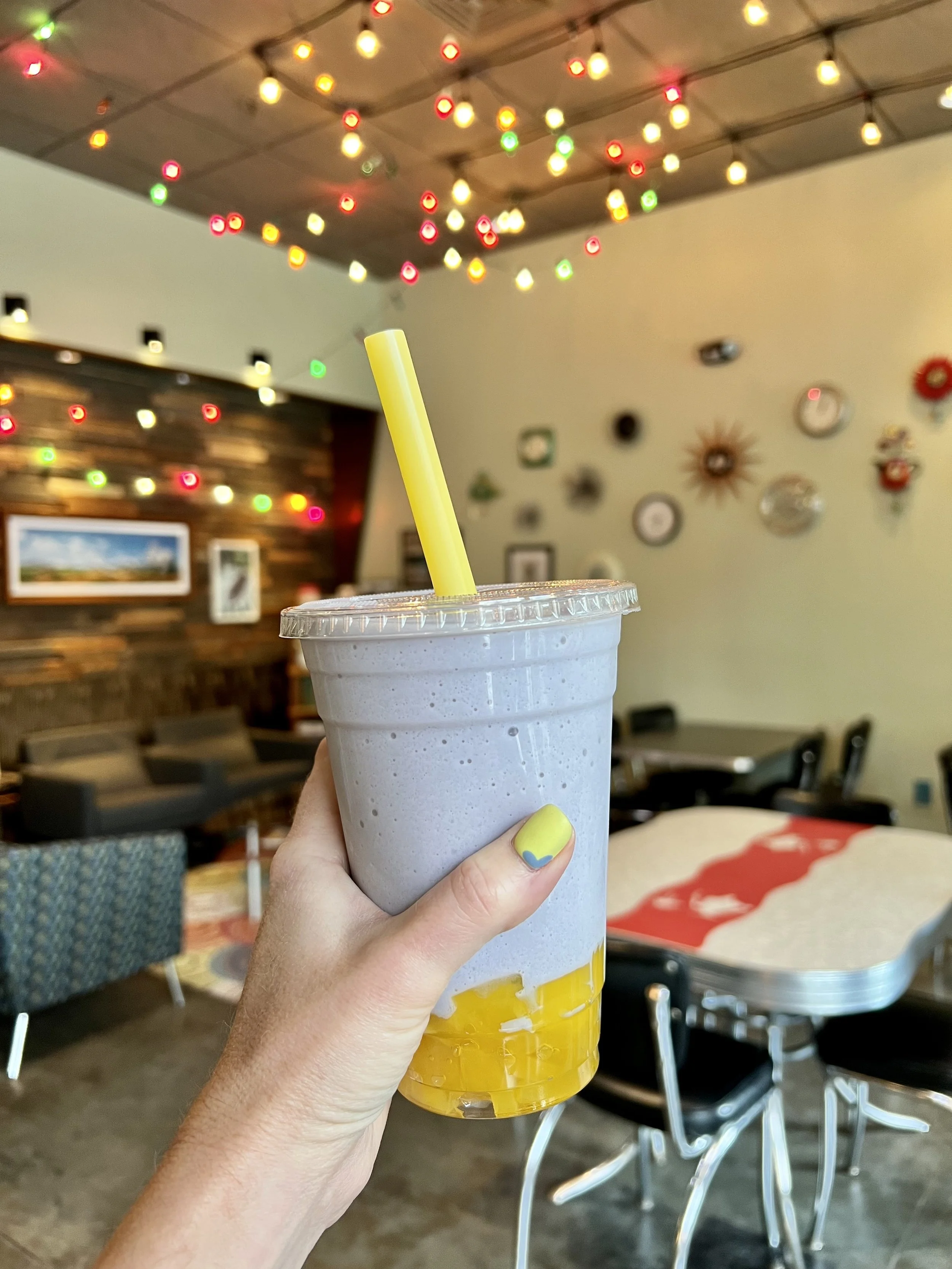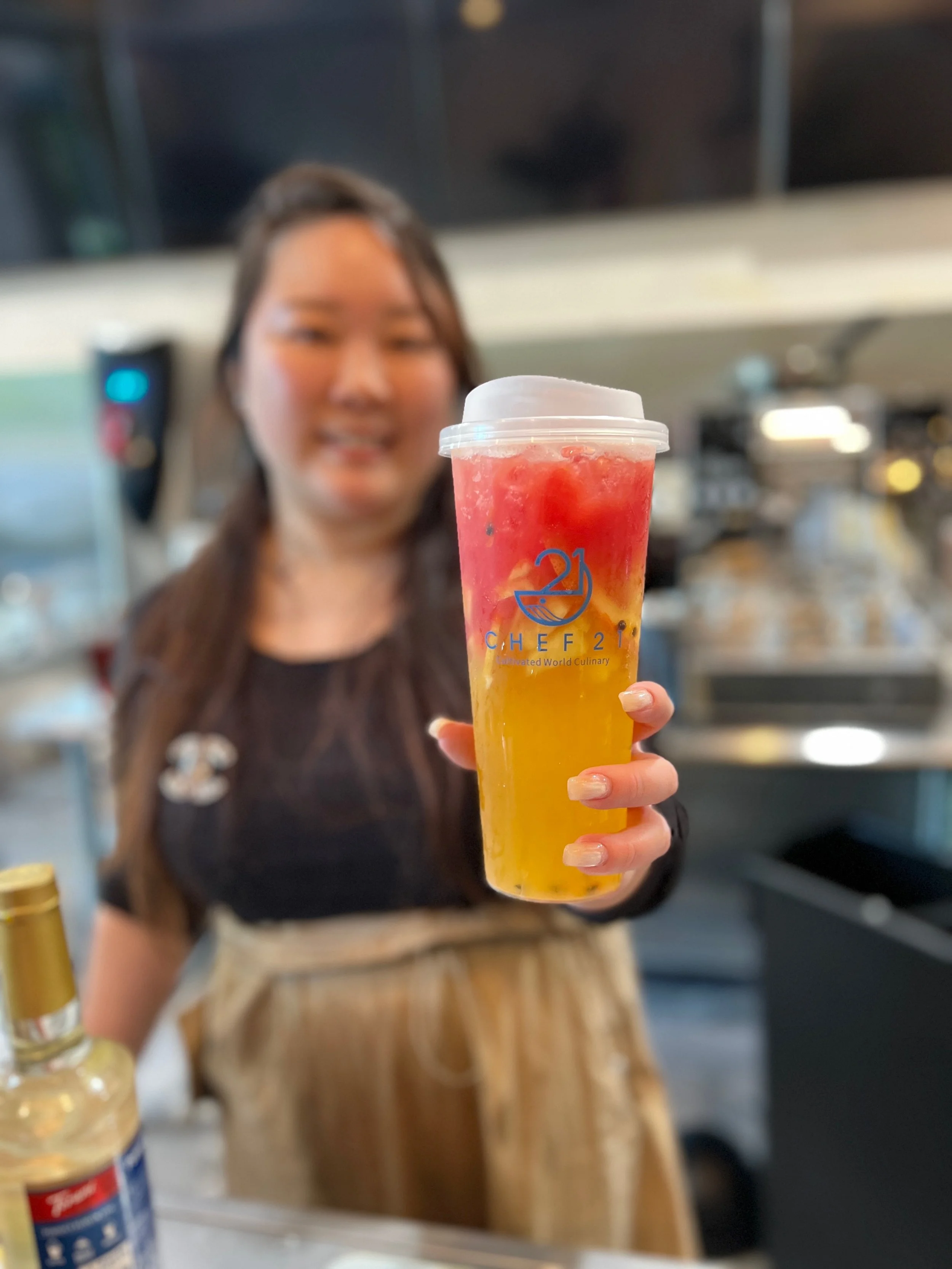Boba Fête
It’s A Tea Party In Your Mouth
You don’t have to be a TikTok addict to have heard about bubble tea or boba. It’s everywhere, from emojis to screen-printed clothing. But there’s a chance you have some questions about the chewy and brightly hued tea phenomenon that rather quietly reached Greenville almost two decades ago and has since exploded across the Upstate.
Is it a dessert or a beverage?
Is bubble tea the same as boba?
Where did it really come from?
And how the heck do you order it?
We’re here to answer as many of those questions as possible, point you to the local shops where you can find this tasty beverage, and make your future ordering attempts as seamless as possible.
Afterall, unlike some other forms of more formal tea service, bubble tea is meant to be whimsical, so let’s have some fun learning more about this par-TEA.
Words: Ariel H. Turner
Images: Team OTGG and Provided as noted
Let’s come to terms . . .
. . . with the reality that the term “boba” is a Chinese slang reference to boobs, and those little boba—or tapioca pearls—we’ll discuss in a moment are also called balls. There. Now that we got that out of the way . . . let’s spill the real tea.
The term bubble tea is used interchangeably with boba, depending on your geographic location, though the two terms have a different meaning. Mallie Majarais, the owner of downtown Greenville’s longest running bubble tea shop—O-Cha Tea Bar—shares some background on the name:
“Bubble tea started in Taiwan in the 80’s as a snack option... shaking tea and flavor with ice in a cocktail shaker. This created a froth or bubbles. Hence, bubble tea. It actually originally had nothing to do with the tapioca pearls. They were added as an option a few years later as just an add in to an Asian dessert. But of course, they look like bubbles, so it makes sense that people assume that's where the name originated.”
Prior to the beverage version, the tapioca pearls were eaten without the addition of tea as a part of desserts. At some point (there are many stories we won’t attempt to verify), the frothy tea and milk combo was poured on top of the boba, and voila—a new slurpable and chewy trend was born.
Boba’s popularity grew and shops popped up all over Asia, eventually expanding to the United States in the 90’s with the Taiwanese immigration boom.
Here’s the break down
This is not exhaustive, but a general overview of what you may encounter at any number of our dozen-plus bubble tea shops in the Upstate.
Every glass of bubble tea starts with a generous scoop of tapioca balls or the increasingly popular jellies and is then topped with either tea and milk or juice. But about those chewy little guys: the texture is key. There's even a word, untranslatable to English, for that perfect consistency in Chinese—"QQ"—which means chewy.
The balls/pearls/boba are made from tapioca, while the multi-shaped jellies are any combo of fruit, sugar, coconut, pectin, etc. Then there’s the popping boba—if you remember the 90’s-era candy called Gushers, you’ll understand the somewhat alarming sensation of bite-sized candies bursting with juice in your mouth. Order wisely.
Tea options also vary. More commonly now, shops use powdered tea, though some still use fresh brewed tea, and the flavor options can number in the hundreds. Tea and juice can be shaken with or without milk or blended like a slush before it is poured over the boba.
Each shop’s offerings will be slightly different, especially if they are locally owned, but this is one instance where Taiwanese bubble tea chains can also offer an authentic experience.
Build Your Own Beverage
We won’t sugar coat it: the ordering stress can be real when confronted for the first time with several columns and dozens of rows of flavor choices, including decisions about ice and sweetness levels. Shop owners and employees are used to seeing the wide-eyed look of sheer panic, so do yourself a favor and ask for help. Also here are some steps to follow:
Step 1: Tea or juice
Are you in the mood for creamy milk and tea or a juicy, lighter version? Picking a flavor is easier once you determine creamy or not.
Step 2: Shaken or blended
Do you want a frozen, slushie texture or something simply chilled? The method will not impact taste.
Step 3: Tapioca, popping pearls or jellies
Choose a flavor that will combine well with your liquid choice and whether or not you like to be surprised by your food.
Step 4: Sugar and ice
Many shops will let you choose how much ice (in the shaken version) and sweetness you prefer. As a general rule, bubble tea trends on the sweet side, so adjust accordingly.
Majarais offers some flavor combination advice that can be applied to other menus as well: Mango milk tea with tapioca pearls; peach green tea with rainbow fruit jellies; honeydew melon snowcream (frozen milk tea) with fresh strawberries; or passionfruit juice tea slush made with green tea and add strawberry popping pearls.
Find your boba
Many local Thai and Vietnamese restaurants also carry a bubble tea option, but here are some shops that are either strictly bubble tea or have a specific focus on beverages:
LOCALLY OWNED
Asia Pacific Supermarket
Chef 21 Tea Republic
Cosmic Rabbits Tea Company
Ninja Warrior Coffee
O-Cha Tea Bar
Plant Stella
TruBroth Coffee and Vietnamese Cuisine (Travelers Rest)
White Rabbit Tea Shoppe (Powdersville)
CHAINS WE ALSO LIKE
Beard Papa’s
Ding Tea
FENG CHA
Kung Fu Tea




